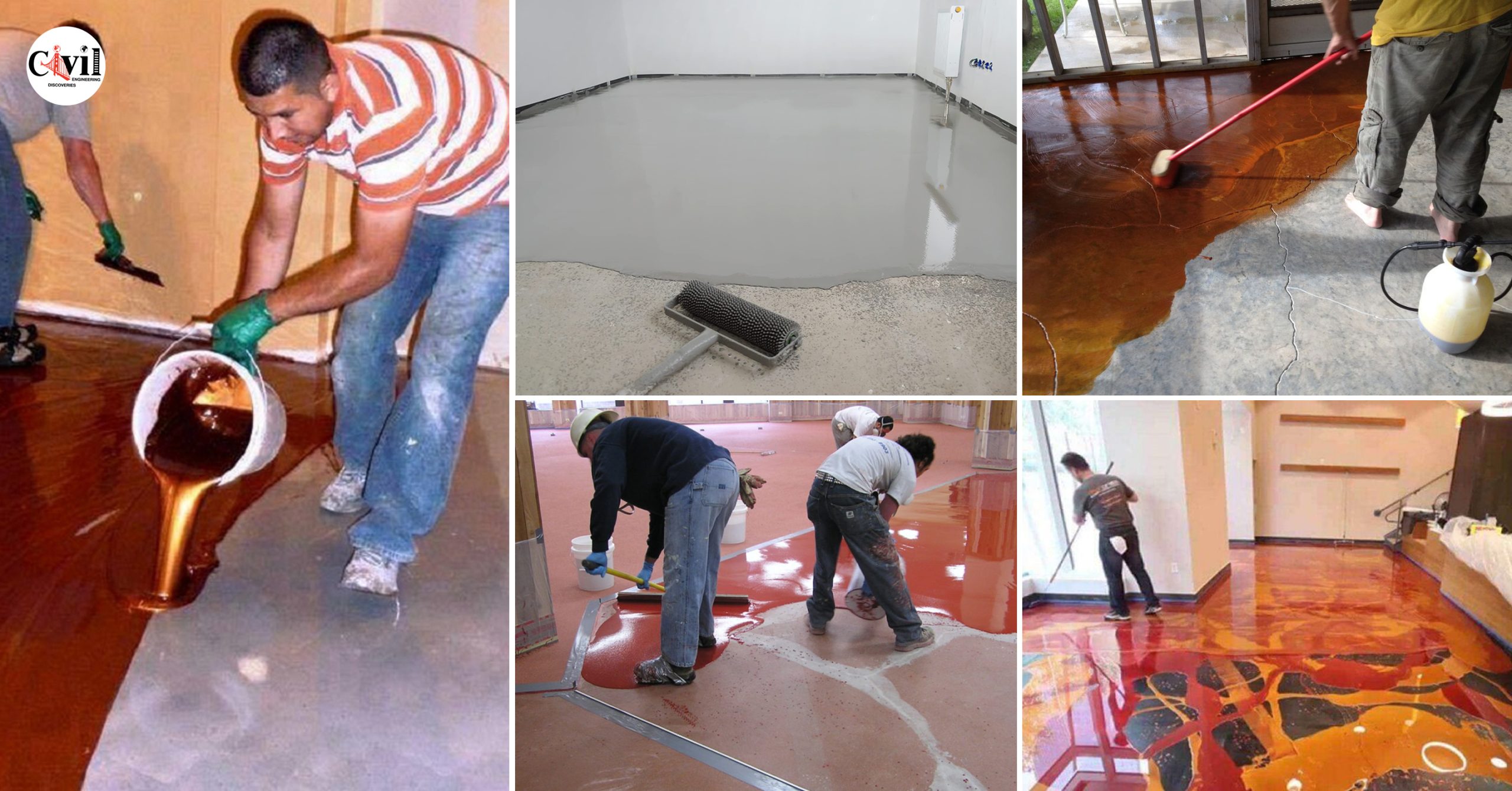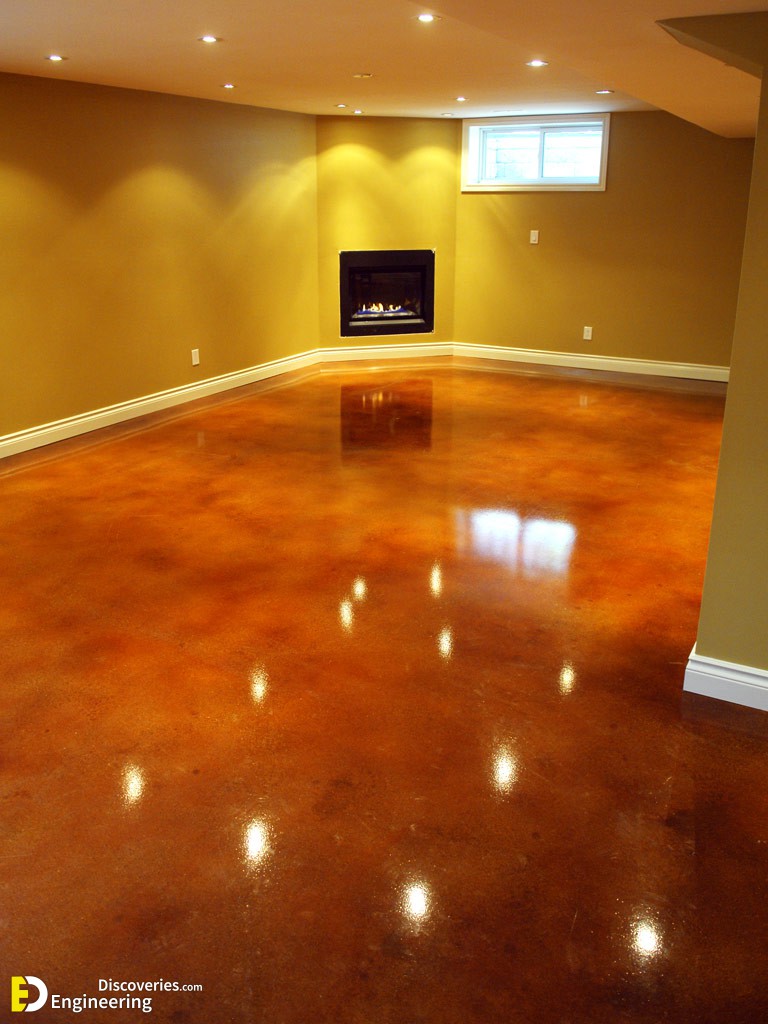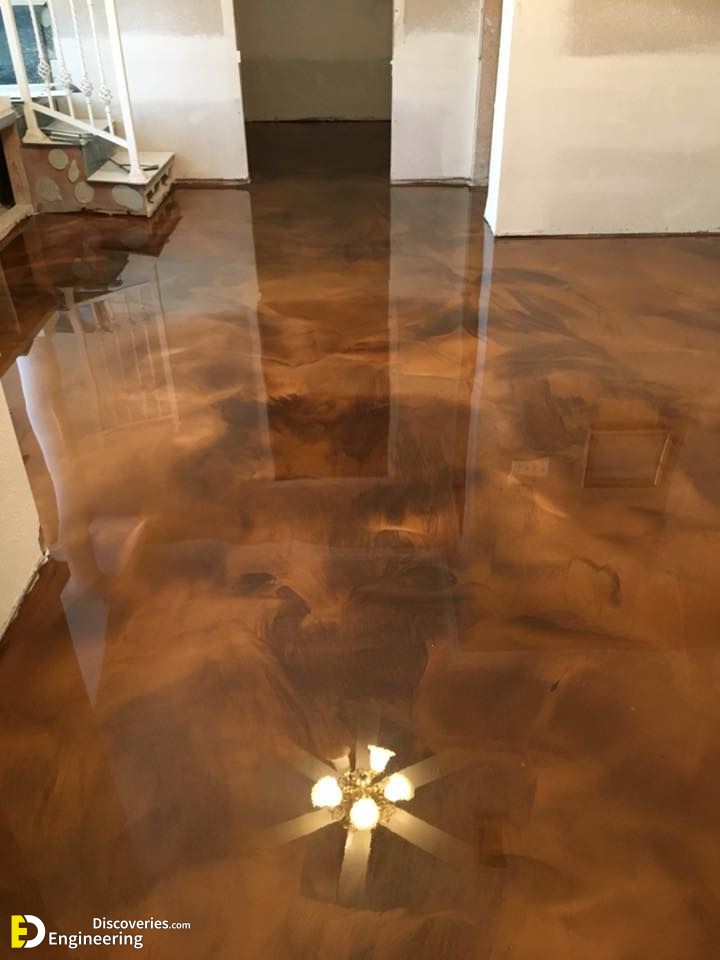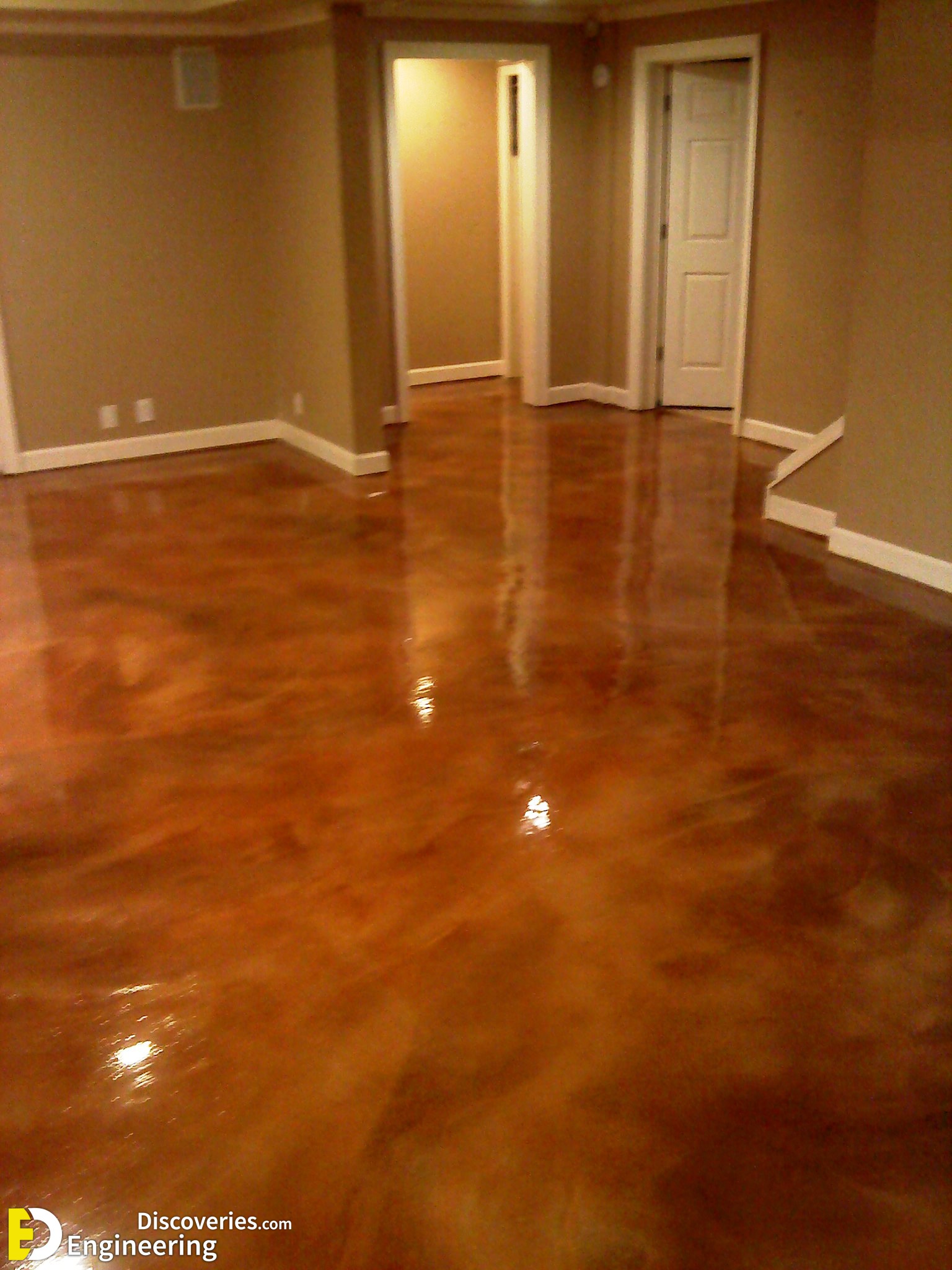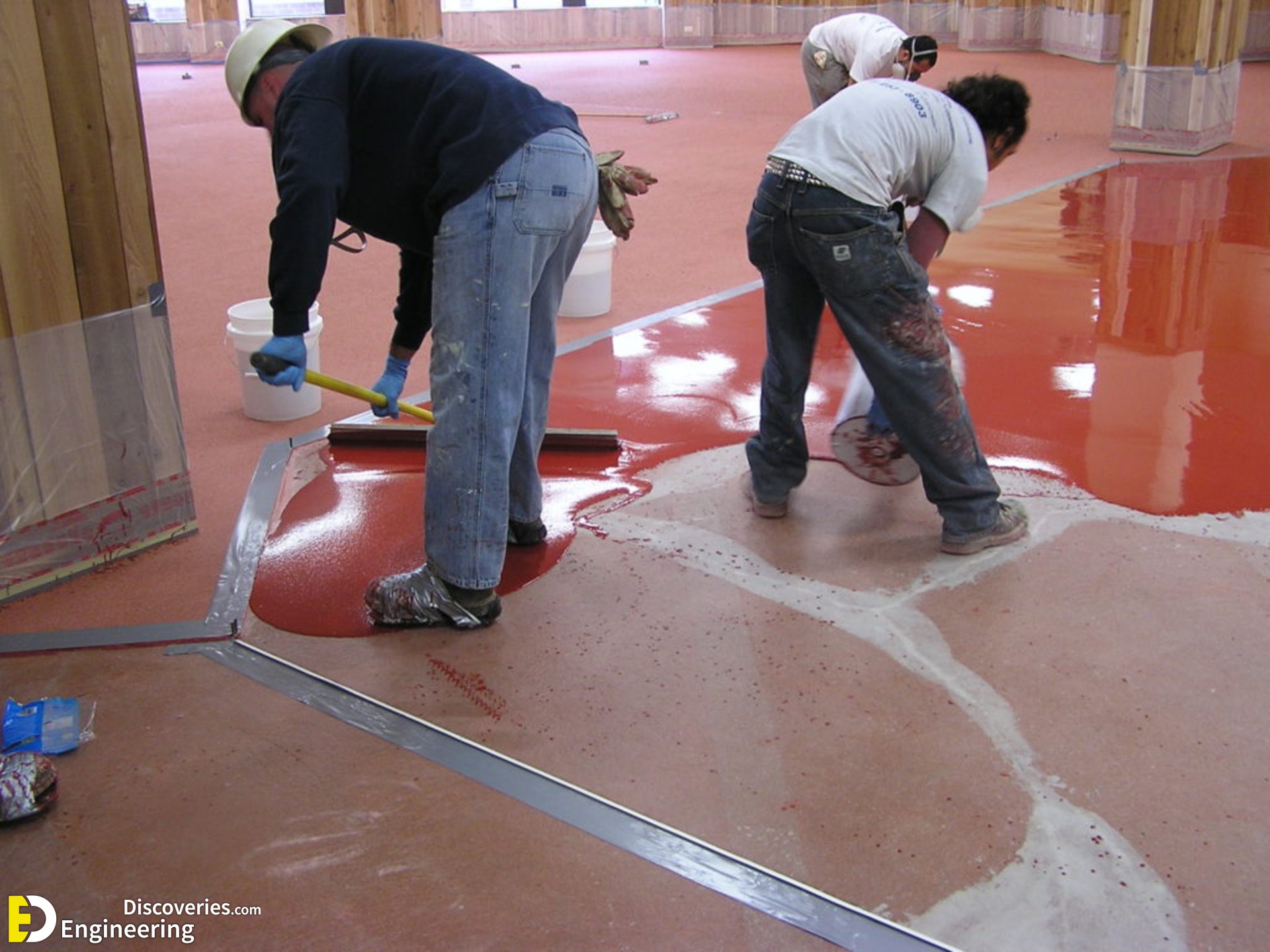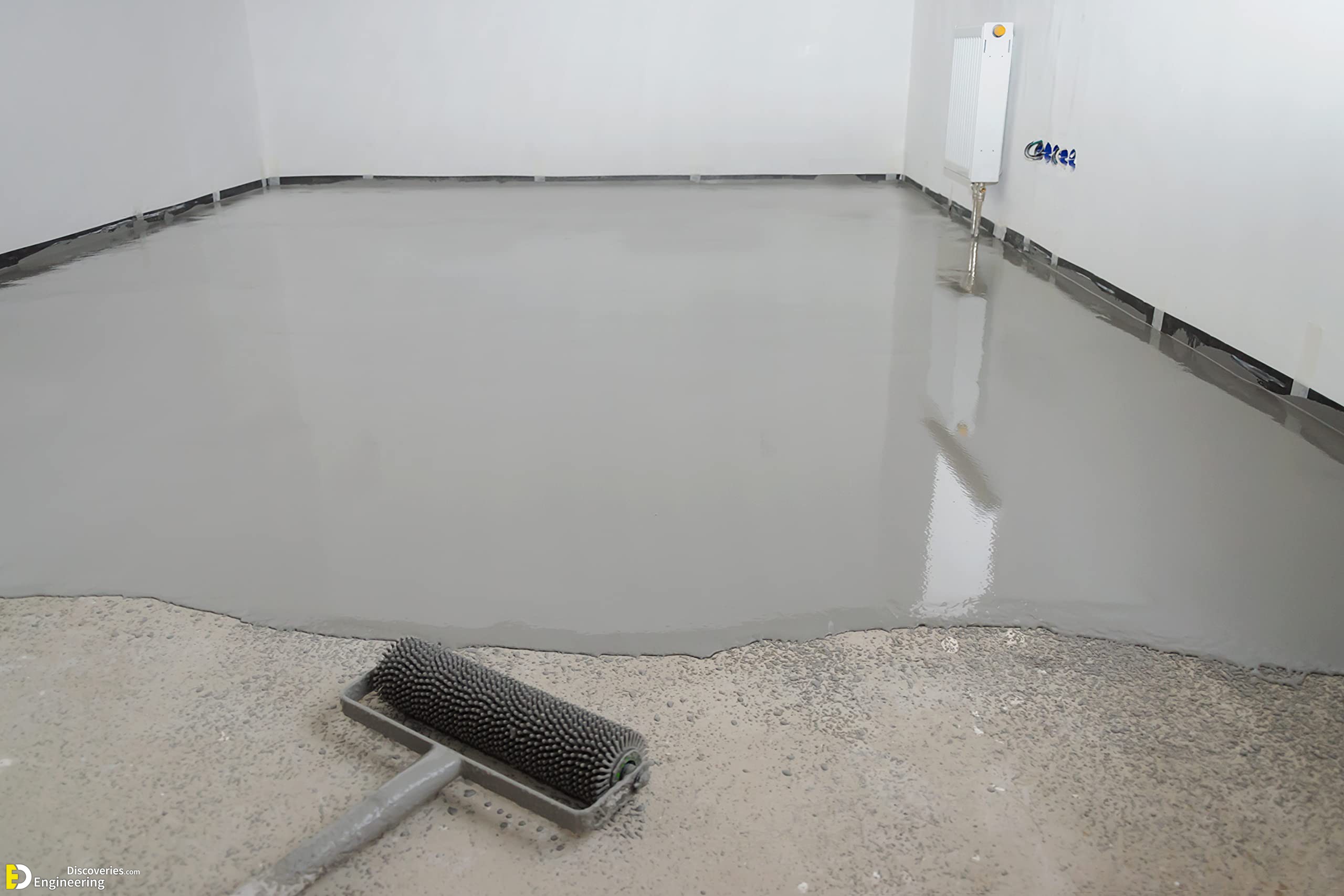Up next
38+ Images to Help You Better Understand RCC Retaining Wall Construction
- 17.2K Shares
Author
Tags
Introduction
Epoxy is a paint, plastic, adhesive, or thermoset plastics material made by the reaction of two or more industrial chemical compounds. The term Epoxy is used to describe a material that is created from two different components by mixing. This component is usually referred to as “resin”.
Epoxy is a copolymer. Chemically resin is made up of short-chain polymers which contain the epoxide group at their end.
What is Epoxy Floor?
A floor which is having an epoxy layer of at least two millimeters in depth is known as an epoxy floor. The difference between epoxy flooring and epoxy coating lies in the depth of epoxy. It is also known as resinous flooring.
Epoxy flooring is highly durable, sustainable, and decorative for any surface. The appealing characteristic of this flooring is it has a higher level of resistance against wear and tear making it the most long-lasting flooring option.
Epoxy coating is normally applied over concrete floors to provide a smooth, durable surface and to increase the load-carrying capacity of the floor.
Mainly industrial sites, warehouses, and commercial buildings rely on epoxy floors to maintain clean and safe conditions for workers, equipment, and inventory.
This type of floor coating consists of resin and hardeners. There are many additives like accelerators, flow control, UV inhibitors, adhesion promoters, etc, that can be added to create a coating that performs well in a wide variety of flooring applications.
By using these additives one can achieve different desired performance characteristics like increased abrasion resistance, more rapid cure, higher chemical resistance, etc.
The aesthetic appearance of epoxy can be improved by adding different pigments, decorative colored quartz aggregate, vinyl flakes, glitter, etc.
Different types of aggregate sand blends (slurry, trowel, broadcast, etc) can also be added to the epoxy to make it a thicker, more durable, and non-slippery flooring system.
Application Process
The first and foremost thing in the application of the epoxy coating is the preparation of the floor surface.
The floor’s surface must be prepared in such an order that it can accept the new coat of epoxy coating on its top. The elimination of dust particles, grinding, shot blasting, and scarifying comes under surface preparation. It is also important to patch and repair all major cracks.
After preparing the surface priming coat is applied to the floor. During priming, the primer must make its way deep into the floor.
After proper application of primer coat, the next thing to do is to fill all the visible holes and visible cracks present on the floor with epoxy.
After filling the cracks the floor must be lightly ground, sanded, and re-layered. To test for sealant, a significant amount of water is applied to the floor. If the water is not soaked in, then the floor is ready for epoxy floor coating,
In the final stage, the epoxy resin is mixed together with an epoxy hardener and applied over the floor surface in multiple layers.
After application, it is cured at the proper required temperature. The curing process is merely initiated when the epoxy creates a reaction with another curing agent.
Types Of Epoxy Flooring
1. Epoxy Mortar Floor
This type of epoxy flooring consists of 100% solid epoxies and quartz sand. This mortar epoxy is used on the floor that requires higher resistance against impact load and chemicals. This epoxy can also be used to repair cracks before applying another type of epoxy floor.
Where To Use:
- Mechanical spaces,
- Warehouses,
- Commercial kitchens,
- Restaurants, garages,
- Manufacturing plants etc.
2. Self-Levelling Epoxy Floor
This type of epoxy is utilized to apply over new, old, cracked, or damaged concrete floors to make a smooth, durable, and leveled texture on the surface of the floor. It increases the aesthetic appearance of the floor.
Where To Use:
- Commercial garages,
- Kitchens,
- Athletic facilities,
- Manufacturing buildings,
- Showrooms,
- Warehouses.
3. Quartz-Filled Epoxy Floor
This epoxy is a combination of high-performance epoxy polymer resin and stained quartz grains. This epoxy is employed for decorative spaces that need sanitary and slip-resistant properties.
Where To Use:
- Lobbies,
- Offices,
- Showrooms,
- Locker rooms,
- Restrooms,
- Schools,
- Cafeterias, Etc.
4. Epoxy Flake Floor
Epoxy flake floors contain colored flake materials that are inserted in epoxy to create a vibrant look. This flake also provides each surface with grooves to reduce any slips and falls.
This epoxy is available in an infinite variety of colors, sizes, styles, and textures using which we can increase the aesthetic appearance of any space.
Where To Use:
- Showrooms,
- Locker rooms,
- Sports venues,
- Bathrooms,
- Bars,
- Garages,
- Clinics,
- Commercial kitchens,
- Schools,
- Churches,
- Laundromats,
- Laboratories,
- Hospitals,
- Grocery and Retail Stores etc.
5. Anti-Static Epoxy Floors
An electrostatic charge can be dangerous to several work situations so to overcome any static hazards in these sites anti-static epoxy floor is used. This floor contains a conductive compound that stores static electricity that diffuses any potential discharge.
The anti-static epoxy floor is a strongly preferable solution for areas that contain flammable materials. It is suitable for areas that use flammable gases or liquids that lead to a risk of ignition.
Where To Use:
It is commonly used in
- Chemical, electronic, or healthcare facilities
- Pharmaceutical manufacturing facilities.
Advantages of Epoxy Floor
Epoxy flooring has many advantages compared to other traditional flooring applied to concrete
- Increases brightness of interior areas as epoxy creates a shiny high-gloss surface
- Epoxy provides a hard durable surface that can withstand heavy and continuous loads
- Easy to install, doesn’t require any special tools or equipment
- These floors are very good chemical resistance. It can resist a large number of chemicals hence it is ideal for industries and warehouses.
- Protects existing concrete layer from wear and tear
- Easy to clean and more durable
- Increases safety when epoxy contains anti-slip additives
- Helps in hiding chips and cracks when combined with paints and colors
- Helps in identifying walkable areas when applied in a different pattern
- Increase the aesthetic appearance of the space
- Little or no maintenance is required.
Disadvantages Of Epoxy Floor
- As the epoxy floor is very hard there will be contact noise during walking.
- Feels somewhat cold without underfloor heating.
- One of the significant disadvantages of this flooring is it is temporary flooring even though it is durable and chemical resistant we have to replace it ultimately.
- Preparation of concrete floor is a tedious process that requires a considerable amount of effort and time
- Epoxy requires many days to dry completely and the application of the epoxy coating is a time-consuming process
- Removal and repairing of epoxy coating are challenging and extensive process
- If the installation is not done correctly the flooring will not serve as long as it should.

